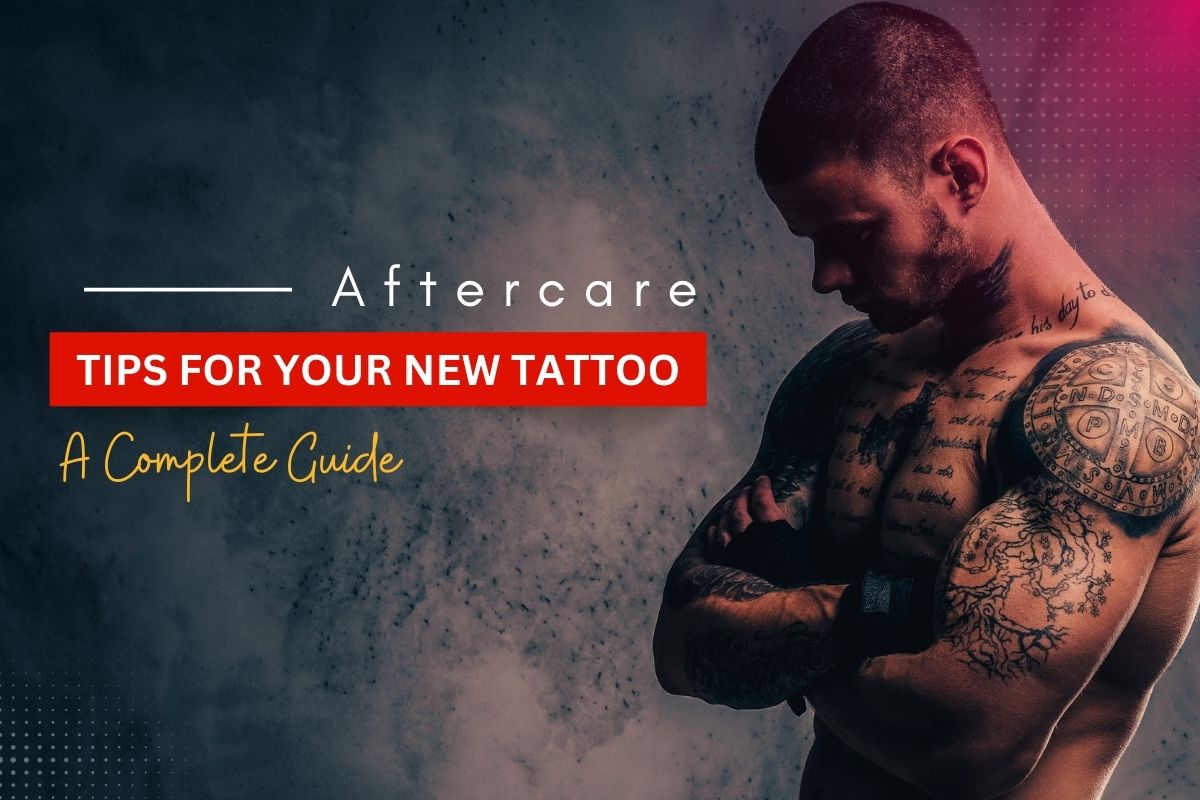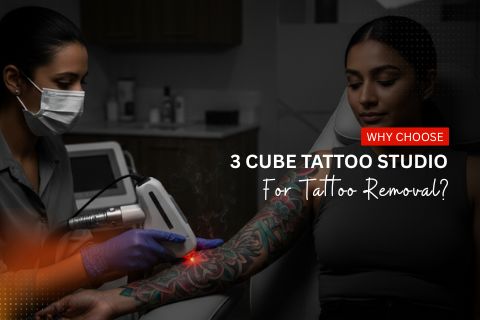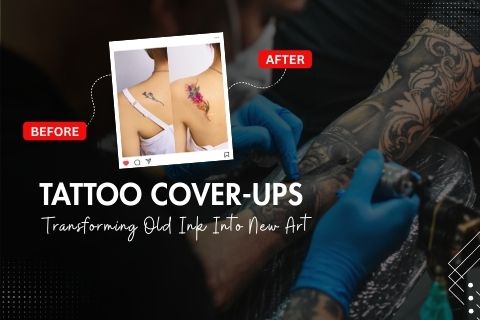
Getting a tattoo is an exciting and personal experience. Whether it's your first or your fifth, the excitement and pride of wearing your artwork on your skin are unmatched. However, the key to ensuring that your new tattoo heals well and remains vibrant for years to come is proper aftercare. At 3 Cube Tattoo, we want to ensure you get the most out of your tattoo investment. In this comprehensive guide, we’ll walk you through the essential steps on how to properly care for a new tattoo, from the initial post-tattoo care to long-term maintenance.
1. The First Few Hours: Immediate Tattoo Care
Once your tattoo is done, your tattoo artist at 3 Cube Tattoo will typically clean the area and cover it with a bandage or plastic wrap. This step is crucial as it protects the tattoo from bacteria and environmental elements.
Steps to Follow:
- Leave the bandage on: It's essential to leave the bandage or plastic wrap on for the recommended time (usually around 2-4 hours). This helps keep the tattoo covered and prevents contaminants from getting into the freshly tattooed skin.
- Wash your hands thoroughly: Before touching your tattoo or removing the bandage, wash your hands with soap and water. Clean hands reduce the risk of introducing bacteria into the healing tattoo.
- Remove the bandage carefully: Once the designated time has passed, carefully remove the bandage. Gently peel it off, being cautious not to disturb the tattooed skin. If it’s sticking, you can wet the bandage slightly with warm water to make the removal easier.
- Clean the tattoo: Use lukewarm water and mild, fragrance-free soap to clean your tattoo. Gently wash away any ointment, blood, or plasma without scrubbing the area. Avoid using a washcloth or anything abrasive on the tattoo.
- Pat dry: Once clean, gently pat the tattoo dry with a soft, clean towel or paper towel. Never rub it, as this can cause irritation.
2. Moisturize and Protect: Keeping Your Tattoo Hydrated
After cleaning, your tattoo needs to stay moisturized and protected. Dry skin can cause scabbing, which can affect the appearance of your tattoo and even lead to ink loss.
Steps to Follow:
- Apply a thin layer of ointment or lotion: Your tattoo artist will likely recommend a specific ointment or lotion, such as Aquaphor or a tattoo-specific moisturizer. Apply a very thin layer over your tattoo to keep it hydrated. Avoid over-applying, as this can suffocate the skin and lead to excessive scabbing.
- Use fragrance-free products: It’s crucial to use fragrance-free, non-comedogenic lotions and ointments. Fragrances and chemicals can irritate sensitive skin and hinder the healing process.
- Don't over-moisturize: While it's important to keep the tattoo moisturized, too much lotion can clog the pores and delay healing. A small amount goes a long way.
3. Avoid Scratching or Picking: Let Your Tattoo Heal Naturally
As your tattoo begins to heal, you may notice some itching or peeling. This is a normal part of the healing process, but it's essential to resist the urge to scratch or pick at the scabs.
Why This Is Important:
- Prevents scarring: Scratching or picking can lead to scarring, which can damage the tattoo’s design and cause the ink to fade or become uneven.
- Prevents infection: Breaking the skin can introduce bacteria, which can lead to an infection, prolonging the healing process and potentially ruining your tattoo.
Steps to Follow:
- Avoid tight clothing: Wearing loose clothing can help prevent friction against the tattoo, which can trigger itching and irritation.
- Don't pick or scratch: If the tattoo becomes itchy, gently tap the area instead of scratching it. This helps soothe the skin without damaging the tattoo.
- Allow peeling to happen naturally: Your tattoo will begin to flake and peel as the top layer of skin sheds. This is normal and should not be rushed. Let the skin fall off naturally to avoid disrupting the healing process.
4. Protect Your Tattoo from Sun Exposure
Exposure to the sun can be incredibly damaging to a new tattoo. UV rays can cause the ink to fade and increase the likelihood of skin irritation or infection. Protecting your tattoo from the sun is crucial during the healing process.
Steps to Follow:
- Avoid direct sun exposure: For at least the first few weeks, avoid exposing your tattoo to the sun. If you must go outside, cover the tattoo with loose clothing.
- Use sunscreen once healed: Once your tattoo has fully healed (usually in 3-4 weeks), apply a broad-spectrum sunscreen with SPF 30 or higher to the tattoo whenever you're out in the sun. This will help maintain the vibrancy of the tattoo and protect your skin.
- No tanning beds: Tanning beds are just as harmful as the sun. Avoid using tanning beds for at least 3-4 weeks after getting a tattoo, as they can damage the tattoo and prolong the healing time.
5. Avoid Submerging the Tattoo in Water
During the first few weeks, it’s important to avoid submerging your tattoo in water. Immersing the tattoo in water—whether it’s in a pool, ocean, or bath—can lead to complications such as infection or fading.
Steps to Follow:
- No swimming: Avoid swimming in pools, oceans, lakes, or hot tubs for at least 2-3 weeks. Chlorine and saltwater can irritate the tattoo and delay the healing process.
- Avoid long showers: While you can shower, avoid letting your tattoo soak in hot water. Quick, lukewarm showers are ideal for preventing unnecessary exposure to water.
- No baths or saunas: These can also introduce moisture and bacteria into the tattoo, so it’s best to avoid them during the healing period.
6. Watch for Signs of Infection
Infection is rare but can happen if proper care isn’t taken. It's essential to be aware of any signs that might indicate an infection in your new tattoo.
Signs of Infection:
- Excessive redness or swelling
- Throbbing or constant pain
- Discharge of pus or foul-smelling fluid
- Fever
If you notice any of these signs, it’s crucial to consult a healthcare professional immediately. A minor infection can usually be treated with antibiotics, but neglecting it can lead to permanent damage to your tattoo.
7. Follow-Up: Long-Term Care for Your Tattoo
Once your tattoo is fully healed (usually 3-4 weeks), it’s important to continue taking care of it to maintain its vibrancy.
Steps to Follow:
- Keep moisturizing: Continue moisturizing your tattoo regularly to keep the skin hydrated. Dry skin can cause the tattoo to fade more quickly.
- Wear sunscreen: As mentioned earlier, applying sunscreen is one of the best ways to preserve the color and quality of your tattoo. Reapply sunscreen throughout the day, especially during prolonged sun exposure.
- Avoid excessive friction: While healed tattoos are more resilient, excessive friction from tight clothing or sports gear can still cause the tattoo to fade or become irritated. Be mindful of how your tattoo is treated post-healing.
Conclusion
At 3 Cube Tattoo, we believe that proper aftercare is just as important as the tattoo itself. By following the steps outlined in this guide, you can ensure that your new tattoo heals properly and remains vibrant for years to come. Remember, a tattoo is an investment in your skin, so taking care of it is an investment in your art. If you have any questions or concerns, don’t hesitate to reach out to your artist at 3 Cube Tattoo for personalized aftercare instructions.
With the right care, your tattoo will continue to tell your unique story in the most beautiful way possible.








